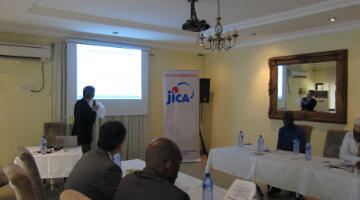
Menu
Menu

In Nigeria, the automotive industry started from local assembly by private companies in the 1960s, and then the federal government initiated the assembly of passenger cars and minibuses of European companies. In the 1980s, in addition to the European companies, domestic companies also began to assemble trucks and buses. However, the automotive industry did not grow as they expected due to the lack of a policy for fostering the automotive industry and the drop in automobile demand due to the economic conditions of the 1980s and 1990s. As a result, all state factories were privatized in 2007. As a part of the manufacturing industry development, the federal government introduced a new policy for national automotive industry in 2013, and was aiming for the development of the automotive industry again. Based on a request from the Federal Government of Nigeria, a survey was conducted for proposing our cooperation policy and concrete plan for countermeasures after organizing the issues surrounding the development of automotive industry in Nigeria.

Discussion with officials of Lagos State

Automotive training course at the Industrial Training Center (Lagos State)
We analyzed the development stage of the automotive industry in Nigeria by comparing between the development policy of the automotive industry and the development policy in other countries and the current conditions of automotive manufacturing. This analysis revealed the development stage of Nigeria in the emerging and developing countries. We also forecasted the future market scale by predicting the demand of automobile sales in Nigeria, assembly at domestic plants and auto parts. Furthermore, we summarized the lessons learned from the results of automotive industry development policies in other countries. Based on the results of our analysis, we organized the actions required for further automotive industry development in Nigeria from the aspects of infrastructure development, skills development, investment promotion, market development.

Workshop for prensenting the output of the survey
Project Details